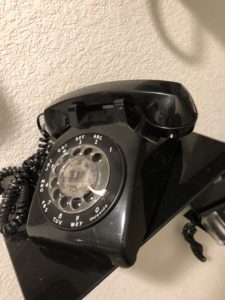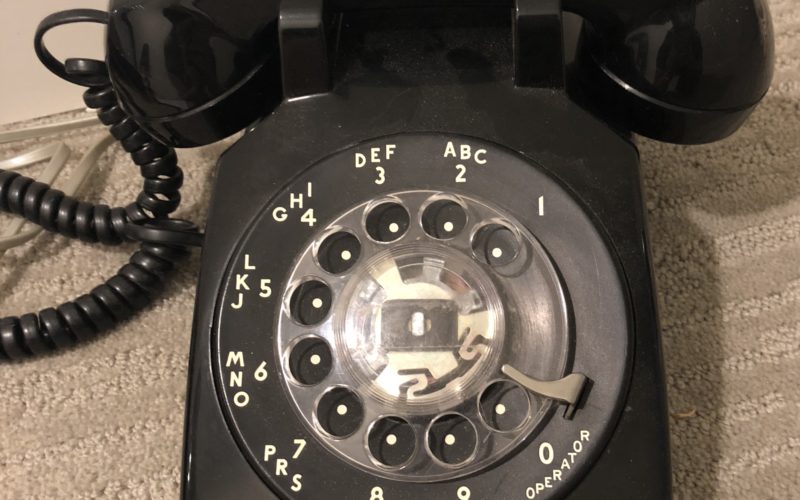Unless you are 12 years old, or have never watched movies from before 1980, you’ve likely seen this phone. As I’ve said before, when Ma Bell owned the phone systems, these were the types of phones that you would ‘rent’ from the company. You didn’t own these; they could come in and take them at any time. It reminds me of a Whoopi Goldberg movie…

Find them on eBay: Search here
A great video about the 500 Series:
From Wikipedia:
A traditional North American rotary phone dial stands at 2 inches tall (5 cm) and 3.5 inches wide (7 cm). The associative lettering was originally used for dialing named exchanges but was kept because it facilitated memorization of telephone numbers.
Several telephone models were derived from the basic model 500, using some of the same components. The model 554 was a wall-mounted version. Other special purpose models included additional features. This included phones with dial lights (500U), party line sets (501), keysets (540 and 560 series), call directors, panel phones (750 series), industrial and outdoor phones (520 and 525), and automatic dialers (660).[6]
Starting in 1963, the Dreyfuss design adapted itself well to the newly announced Touch Tone® service. For the trial period, the dial was simply replaced with circular closure containing a keypad and a telephone number label. The 1500 and 2500 models adopted a more rectangular design style; the curves of the original design gave way to a raised borders forming a lip around the finely-ribbed faceplate, in the middle of which the keypad and number window were centered.
As with most telephones of the time in the United States, the 500-series telephones were owned by the local Bell Operating Company and leased on a monthly basis to customers. Choices for telephone styles and colors were limited. AT&T, the principal owner of the operating companies and Western Electric, strictly enforced policies against buying and using telephone sets by other manufacturers on their network, to ensure the technical integrity of their network and avoid competition. Most phones made by Western Electric, starting in about 1968, carried this disclaimer molded into their housing: “BELL SYSTEM PROPERTY–NOT FOR SALE.” Telephones were also sometimes labeled with a sticker or ink stamp marking the name of the operating company that owned the telephone. After consumers started buying telephones from other manufacturers,[citation needed] in the wake of legal developments not favoring AT&T’s ban against third-party equipment, AT&T changed its policy for the Design Line telephone series by selling customers the telephone housing but retaining ownership of the electrical components, so customers were still required to pay AT&T a monthly leasing fee.
In 1983, after the court ordered the Bell System divestiture, AT&T started selling telephone sets outright to the public through its newly created American Bell division. Many customers were offered the option to buy the leased telephones they had in service. AT&T closed its USA consumer telephone manufacturing plants in 1986, and moved production offshore to Singapore, China, and Thailand, and in the 1990s to Mexico; this let them produce telephones at lower cost.

